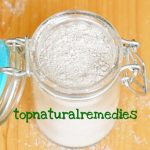Lower Your Cholesterol with Pu-erh – The Real Black Tea
Pu-erh tea is made from the leaves and stems of the Camellia sinensis plant, the same plant that is used for making green, oolong, and black teas. Though the same source plant is used, the teas are different because different processes are used in their making. Thus, green tea is not fermented, oolong tea is partially (10 to 80%) fermented, black tea is fully fermented, and pu-erh tea is post-fermented (although its fermentation differs from that of the black tea, being not an internal process, but an external one, initiated by fungi or bacteria or both). Different processes bring about slightly, but nonetheless significantly, different properties. All teas (and by teas we mean now real teas, made from the leaves and stems of the Camellia sinensis plant, not the usual herbal teas) have antioxidative effects, but one of them has something more.

Pu-erh tea (also known as aged or vintage tea) is unlike any other tea in the world. Like in the great wine regions of the world, pu-erh tea production is highly regulated to ensure the highest quality and authenticity. Only aged tea that comes from Yunnan province can be called pu-erh tea. Infusions made from pu-erh tea are of a special dark colour, unlike the one made from what we call black tea, which has a rather distinct red colour. Unfortunately, history has contributed to considerable confusion in the naming of Chinese teas. What is known as the Chinese black tea in the West is actually known as red tea in China. The true black teas are the aged post-fermented teas, of which the pu-erh family of teas is the oldest and the most famous.
Contents
Antioxidative properties and more
The antioxidative effects of the teas are due to the presence of a type of flavonoids called catechins, of which epigallocatechin gallate (EGCG) is the most potent. EGCG is the most significant active component for which the medicinal properties of green tea are appraised. EGCG is not only an excellent antioxidant, but also a powerful anti-inflammatory and an inhibitor of lipid peroxidation (a process implicated in several pathologic conditions, including atherosclerosis). And according to Japanese research, green tea reduces the levels of LDL (the “bad”, low density cholesterol), also due to the presence of flavonoids.
But the levels of flavonoids (as well as those of caffeine) decrease in the process of fermentation, which means that pu-erh should have the lowest antioxidative power. Well, this might be the truth with regard to catechins, but in the long process of post-fermentative aging pu-erh gains something that makes it quite effective in lowering the LDL and raising the HDL (the “good”, high density cholesterol). This something was only discovered in 2003 by Chinese researchers: It is called lovastatin and is one of the most effective cholesterol-lowering agents.
What’s next?
Lovastatin seems to be produced by the fungi and bacteria responsible for the long process of fermentation characteristic to the making of pu-erh. Scientists have thus tried to determine the influence of the variety of pu-erh, its age and the fungic and bacterial strains active in the process of fermentation. So far, the results have shown that the most important factor is the microbial strain: Pu-erh aged for six month with Streptomyces bacillaris and Streptomyces cinereus contained 4 and 8 times, respectively, more lovastatin that the quantity measured in a 25-year old pu-erh aged with different strains.
However, the amount of lovastatin is at trace levels, with a maximum of 4160 ng/g (in the above mentioned aging with Streptomyces cinereus), while, for example, the maintenance dose of the prescription drug is at least 10 mg a day. But the information is nonetheless important for scientists, who will want to develop better methods, through applied microbiology, for producing teas that are still delicious but even more healthful than they already are.



